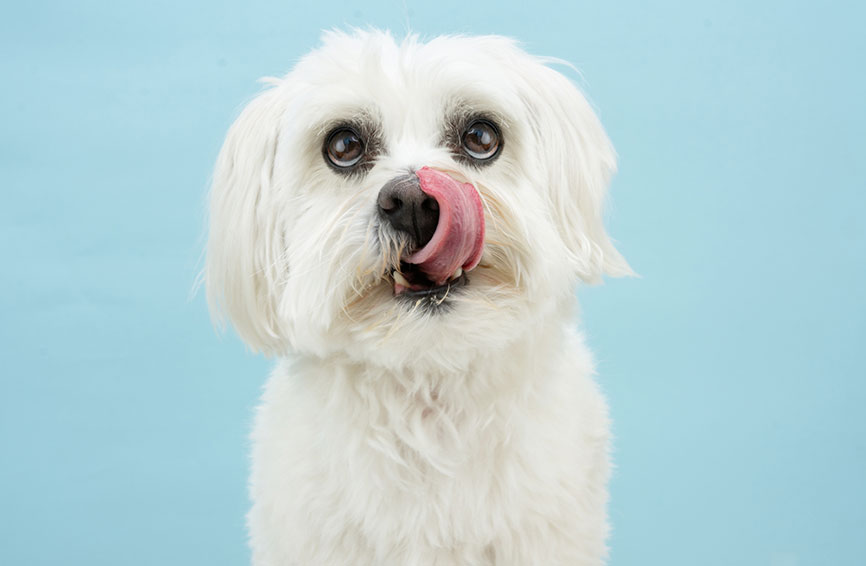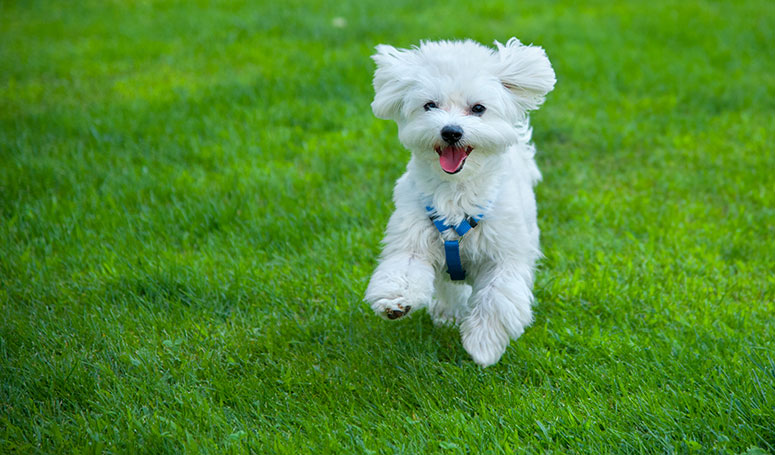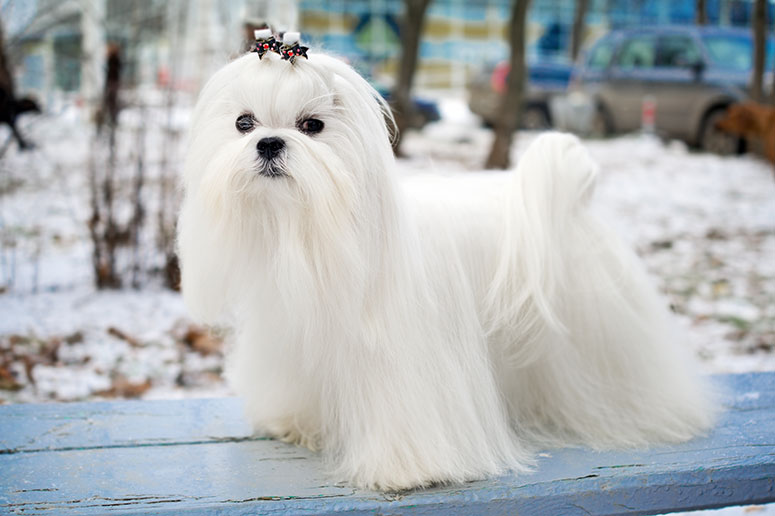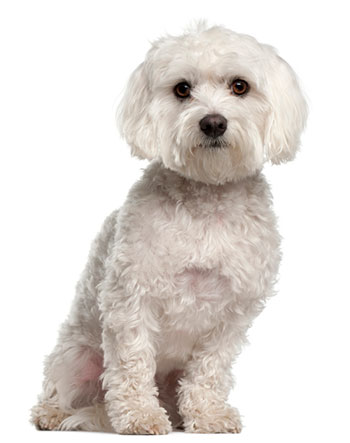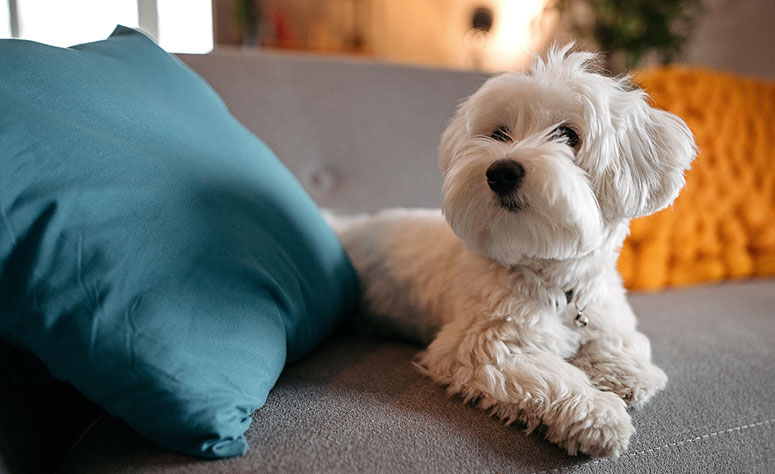Table of Contents
Introduction to Maltese
The Maltese are a dog breed that is charming, playful, gentle, and tiny in size. These are toy breed dogs that are less than seven pounds when fully grown. Always affectionate, adaptable, and adorable, Maltese are known for their silky coats and elegant appearance. They have been luxurious lap dogs since Biblical times and have a glamorous and noble personality to match their good looks. But these dogs can do much more than just sit pretty because, with proper training, they can also be excellent therapy dogs and excel at agility courses.
If you’ve been craving a tiny and lovable white dog in your life, read on to learn more about the Maltese breed and how to best care for this type of dog.
Size of Maltese
The Maltese’s size is one of its most defining characteristics. As adults, these dogs reach heights of seven to nine inches tall and do not typically exceed seven pounds in weight. There are only very small differences between the size of male and female Maltese, but males are the larger of the two genders.
Most of a Maltese’s growth occurs within the first six months of life, and these dogs are typically fully grown by nine months old.
Here’s how big you can expect your Maltese to be at different life stages.
| Weight Chart | Birth | 3 months | 6 months | 9 months |
|---|---|---|---|---|
| Male and Female Maltese | 0.25-0.5 lbs. | 2.25-4 lbs. | 3-6 lbs. | 3-7 lbs. |
Despite their tiny size, Maltese are fearless dogs that are spry, lively, and people-oriented. They love pleasing people and assume that everyone they meet is a new friend. These cute, sweet dogs have a tendency to get spoiled as a result of these tendencies and their size.
As you spend time with a Maltese, you’ll probably also find that the dog is intelligent, responsive, and a fickle eater. Yet just like humans, every Maltese is different and the unique product of its genetics, upbringing, and environment.
As you get to know a Maltese’s personality, here’s what you can expect based on his or her breed characteristics.
| Breed Characteristic | Level (High, Medium, Low) |
|---|---|
| Affectionate with People | High |
| Good with Kids | Medium |
| Good with Pets | Medium |
| Need for Exercise | Low |
| Energy Level | Medium |
| Intelligence Level | Medium |
| Ability to Be Trained | Medium |
| Amount of Barking | Medium |
| Amount of Shedding | Low |
History of Maltese
The Maltese are an ancient breed of toy dog with a history that can be traced back thousands of years. The country of Malta, for which the dog is named, is in the Mediterranean Sea and south of Sicily. This is an island that was once a thriving seaport and a crossroads for merchants and mariners. Records suggest that the Maltese dog was introduced in Malta by the Phoenicians who ruled the area, and the dog continued to be loved by the Greeks in the fourth and fifth centuries B.C.
Maltese dogs were a symbol of status and fashion during the Roman Empire and were known as the “Roman Ladies Dog” that was carried around by elegant women. Many portraits during this time were painted with women holding these beautiful little dogs. Chinese breeders kept the Maltese in existence during the Dark Ages in Europe.
They were in the earliest Westminster Kennel Club shows in the 1870s and first became popular in the U.S. in the late 1800s. The American Kennel Club has recognized the Maltese as a breed since 1888. These dogs continue to be fan favorites at spectator shows and often win awards in the Toy Group of dogs, including “Best in Show.”
Maltese Standard Information
As a purebred dog, there are certain standards that a Maltese must live up to if they want to enter an official competition or show. The general appearance of these dogs includes being covered from head to toe by long, silky, white hair. These are eager and affectionate dogs that need frequent grooming but are unlikely to shed or drool, based on their breeding and genetics.
Here is an overview of the breed standard information for Maltese:
Head:
- Medium length head
- Drop ears low set and heavily feathered
- Eyes very dark and round
- Medium length muzzle that is tapered
- Black nose
- Edge-to-edge or scissors bite
Neck, Topline, Body:
- High carriage of the head
- Compact body with sloping shoulder blades
- Deep chest and taut loins
- Long-haired plume tail
Legs and Feet:
- Fine-boned legs that are nicely feathered
- Straight forelegs and strong hindlegs
- Small and round feet with black toe pads
- Long hair on feet may require trimming
Coat:
- Single coat without undercoat
- Long, flat, and silky
- Long head hair can be tied up or left hanging
Color:
- Pure white is the most desirable color
- Light tan or lemon-colored ears permissible but not desirable
Gait:
- Flowing and smooth gait
- Movement appears rapid with size considered
- Elbows close during stride
Caring for Maltese
Pet parents should know that Maltese are very social dogs; they are generally unafraid of strangers and other dogs. They are loyal dogs that become very attached to their owners and can suffer from separation anxiety if left alone too long. Maltese make great family dogs, and they are also excellent companions for senior citizens who spend most of their time indoors or have limited mobility. They are moderately adaptable and good dogs for first-time pet owners because of their easy care, compared to some other breeds.
Here are some general tips for taking the best care of a Maltese:
Best Living Environments:
- Both apartments and houses
- Room to run around in circles, even in a small space
- Warm (but not too hot) environments because they are prone to chills
- Not recommended in households with very small, rowdy children
Type of Exercise:
- Running around indoors in a home
- Playtime in a small, fenced yard
Mental Enrichment:
- Agility training and obedience courses
- Small toys inside a house
Training Strategies:
- Can be difficult to housetrain
- Known to be stubborn and determined
- Crate training is recommended
- Responds well to food rewards and praise
Grooming Tips:
- A full coat requires daily grooming
- Brush daily to prevent tangles and mats
- Choose a shorter cut for lower maintenance
- Frequent baths with conditioner to keep the coat shiny
- Brush teeth regularly to prevent dental disease
- Trim nails once or twice per month
Common Health Problems of Maltese
Maltese dogs are healthy and long-lived dogs that have a typical life span of 12 to 14 years. Although this breed has fewer major health concerns than many other breeds, it is still a smart idea to get pet health insurance in case of an accident or unexpected illness. Healthy Paws insurance will even cover treatments for cancer, emergency care, genetic conditions, and alternative care, such as chiropractic care and acupuncture.
These are some of the most common health issues that arise with Maltese:
- Patellar luxation
- Open fontanel
- Hypoglycemia
- Hydrocephalus
- Distichiasis
- Dental problems
- Portacaval shunt
- Joint problems
- Allergies
- Patent ductus arteriosus and other heart abnormalities
The national breed club recommends Maltese get a cardiac exam and patellar evaluation, due to the genetic predispositions of this breed. Also, check your Maltese’s ears at least once per week to ensure that excess hair isn’t growing in the ears and that there is no bad odor. A Maltese’s eyes and beard should be cleaned with warm water daily to prevent staining of the coat.
Diet and Nutrition for Maltese
Maltese need between ¼ cup and ½ cup of dry dog food per day, divided into two meals daily. It is best to give your Maltese two meals per day rather than leaving food out all the time, to prevent overeating and obesity.
Maltese dogs are known to be picky eaters and have delicate digestive systems. Therefore, you may need to try a few different high-quality dog foods to find one that works well for your pup. Some recommended brands of commercial dog food to consider are Blue Buffalo Small Breed Life Protection Formula, Wellness CORE Grain-Free Small Breed Recipe, and Merrick Lil’ Plates Grain-Free Small Breed Recipe.
Where to Adopt or Purchase Maltese
The American Maltese Association is a national breed and member club of the American Kennel Club and has resources to help you find a reputable breeder if you want to purchase a purebred Maltese. There are also Maltese regional member clubs that host specialty shows and events, as well as breed-judging seminars.
To adopt a Maltese in need of a home, check out the American Maltese Association Rescue, which is a nonprofit organization committed to helping homeless Maltese dogs and getting them adopted and fostered in loving households. Local and regional rescue groups that specialize in Maltese include the Metropolitan Maltese Rescue in the New York City metro area, Maltese Rescue of OKC in Oklahoma, and Maltese Rescue California on the west coast.
Related Breeds
If you love small, white, and fluffy types of dogs, there are additional dog breeds that you might be interested in as well. Maltese dogs have also been crossbred with other types of dogs to create hybrid pups that share some of the most desirable characteristics of the Maltese.
Here are some related breeds to learn about before bringing a new pet into your home:
- Bichon frise
- Coton de tulear
- Biewer terrier
- Maltipoo
- Malchi
- Morkie
- Maltipom
- Maltipug
Pet Insurance for Maltese
Maltese, like all dogs, deserve the very best care and to be looked after by loving people who bring them into their homes. When you have a Healthy Paws pet insurance plan, you can prioritize the health of your Maltese without worrying about the financial burdens that come with the rising costs of veterinary care.
More than 500,000 pets have been enrolled in Healthy Paws pet insurance plans, including many adorable and fearless Maltese who are living their best lives. You can take your Maltese to any licensed veterinarian you trust and submit vet bills through the convenient mobile app or online platform.
Get your Maltese pet insurance quote now.
